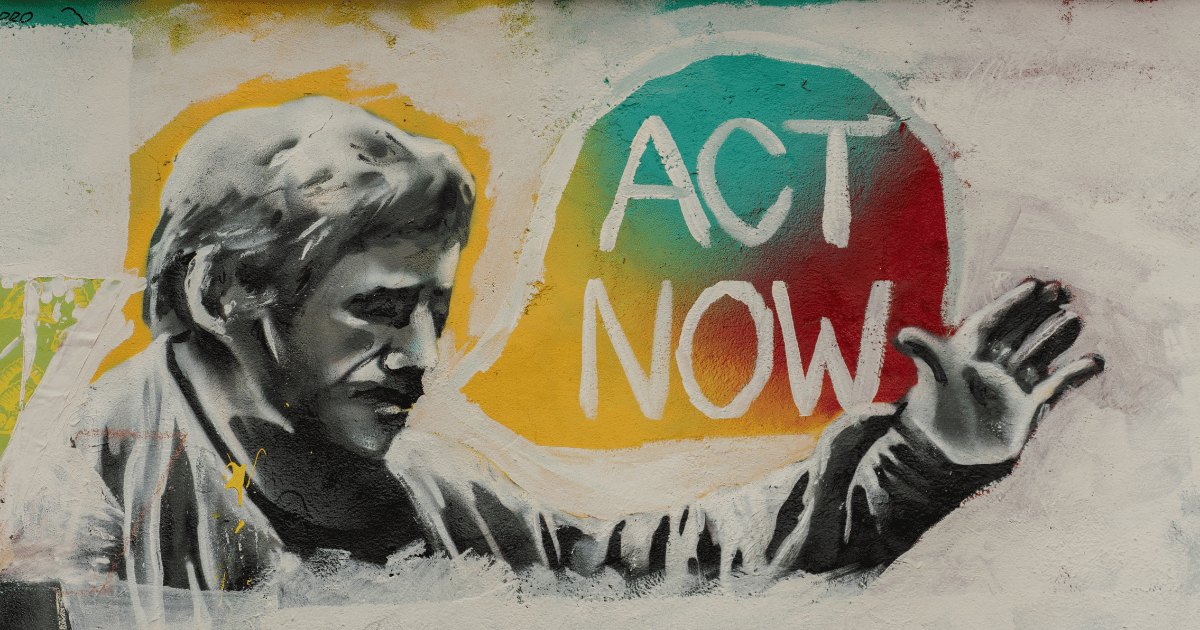Hi, my name is Bryan Socransky, and I'm the Director of Product Marketing at Zendesk. Most of my career has been in B2B technology, and SaaS in particular. I’ve worked for startups as well as large corporations like Oracle, launching dozens of new products, and I’ve run many, many B2B marketing campaigns over my 25-plus-year career.
I'm here today to talk to you about overcoming the biggest competitor in B2B technology, which is almost always the status quo.
Here’s what I'm going to cover:
- The power of the status quo,
- Why the status quo is a problem in B2B,
- The cause of this problem, and
- How product marketing can help overcome the status quo.
The power of the status quo in B2B
First, let me share a valuable lesson I learned about the status quo and how it is almost always the biggest competitor in B2B – especially B2B technology.
In 2014, I was chasing a deal at a utility company. It was a big opportunity. They were a perfect fit for the B2B SaaS solution I was selling.
I did almost everything right. I visited the customer many times, my solution consultant did multiple amazing demos of our product, and I brought in some business consultants who put together a great business case showing the fantastic return on investment that our product would bring.
The customer posted an RFP (request for proposal), so we devised an absolutely amazing proposal and answered every question they had.
But in the end, the customer decided to do nothing. They stayed with their current solution even though it was old and riddled with issues. The status quo – doing nothing – seemed like an easier and safer decision to them.
Ever since that painful experience of putting so much time and energy into a deal, only to lose it to pure inertia, I’ve been obsessed with overcoming the status quo.
What is the status quo?
In B2B, the status quo can show up in a few different ways: A project can get delayed, it can get deprioritized, or it can get canceled altogether. Sometimes customers end up making no decision or simply staying with their current solution – which is exactly what happened in the scenario I just shared.
This is an approximate representation of what the competitive landscape looks like for Zendesk, and I believe it looks very similar for most B2B tech and SaaS companies. It’s certainly been my experience over the past 25-plus years.
As you can see, we’re only competing head-to-head with our direct competitors in a very small percentage of deals. More opportunities never fully materialize or are lost to the status quo than to any direct competitor.
The bottom line? As in most tech companies, the status quo is our biggest competitor by far.
The main reason for this is that prospects are okay with their current solution. The status quo is acceptable to them, so they never reach out to Zendesk or any of our competitors. The status quo is like a warm blanket on a cold day. It feels safe, while change feels scary.
When the prospect chose the status quo over our product, it felt like the right decision to them. Nobody wanted to take the risk of investing millions of dollars in a big software project – after all, if it hadn’t worked out, that could have cost them their credibility or even their job.
Understanding consumers' fear of change
If you look at the research into emotional fears, fear of change often ranks at the top of the list. People fear change more than they fear loneliness and rejection.
Here’s a classic example of how much people hate change. In 1985, Coca-Cola were facing increased competition from Pepsi, so they introduced a new formulation. Now, they didn't just rush this to market. They did 190,000 blind taste tests across the United States and Canada and got overwhelming data showing that consumers preferred the taste of New Coke over the old Coke.
So far so good, right? Not quite.
When they introduced New Coke, there was outrage. Loyal consumers were calling Coca-Cola to the tune of 8,000 phone calls a day, complaining about this new formulation.
The problem was twofold: The company had totally underestimated loyal Coke drinkers’ emotional attachment to the drink and the brand; they’d also overlooked the fact that people hate change.
Now, you might be thinking, “Great, Bryan, but Coke is a consumer product. What does this have to do with B2B?” Well, we have to remember that even in B2B, we’re ultimately marketing and selling to people – and the fears and biases they have as consumers don’t just disappear when they put on their professional hats.
I have some more bad news for you: Buyers’ preference for the status quo is heightened in an economic downturn or recession. It's a tougher challenge to overcome.
That’s because, honestly, most companies can live without the products we’re selling. Yes, our products can help reduce costs and improve productivity, but at the end of the day, they can postpone the purchase without suffering any catastrophic consequences. This is a major challenge we face as product marketers.
Product marketing’s role in overcoming the status quo
There are just two things I want to zero in on that product marketing can do to help overcome the status quo:
- Get customers to buy into the change
- Emphasize the urgent need to invest in your product
Let’s start with the first one. A vital ingredient missing from too much product marketing is explaining to a prospect why they need to change. We rush into talking about our products, features, value propositions, and their superiority to the competition – but that’s putting the cart before the horse.
We need first to make sure that customers are fully bought into the need to change. Until they’re fully committed to change, nothing else matters. It doesn’t matter how great your demo is or how fantastic your sales presentation looks if the customer is not 100% committed to change. I learned this the hard way.

The second ingredient missing from too much product marketing content is urgency. Urgency is the grease that gets deals done and products purchased. We need to communicate clearly why a customer needs to buy the product now.
If your product does not fill an urgent or critical need, you’ve got a problem – especially in an economic downturn. A discretionary purchase will get lumped in with the other 25 nice-to-have projects. The organization you're trying to sell to only has a limited amount of budget, time, and resources, so they're going to narrow down that list of 25 non-urgent projects to just a handful.
You have to convey to the customer why they need to act now rather than later, or the product or service that you’re trying to sell will be one of those that are delayed, deprioritized, or canceled altogether.
A call to arms
I want to make sure that as a product marketer, you follow these steps and don't just stick with your status quo. Don't continue to only talk about your core value proposition and differentiation.
In the book The Jolt Effect, the authors talk about a large-scale study of more than 2.5 million recorded sales conversations, spanning both transactional and complex sales. They found that anywhere between 40 and 60% of deals end up lost to customers who expressed their intent to purchase but ultimately failed to act.
The authors point out – and any salesperson will agree – that you're far more likely to lose a deal to no decision than to a direct competitor.
I hope what I've shared has resonated with you and you’ll start thinking about how the status quo impacts your business, and what you can do about it as a product marketer.
Now, I’ll wrap up with three specific calls to action.
Call to action #1: Track your losses to the status quo
First, you need to track how and when you’re losing deals. You should aim to understand if you’re really losing deals to your direct competitors or if the status quo is winning. In many cases, lost deals are miscategorized, and it’s upon product marketing to capture data on exactly why deals are being lost.
Call to action #2: Create value props for urgency
The next call to action is to create value propositions that scream urgency. Why is it urgently important to buy and use your product or service? Is that coming through in all your messaging and content?
Call to action #3: Enable sales teams
Finally, it’s crucial to arm sales teams with sales tools, content, and marketing kits that help them move deals along and convey to prospects why the status quo is not an option. Make them understand the urgency of changing today.
This article is based on Bryan Socransky’s brilliant presentation, ‘Overcoming your biggest competitor in B2B technology – the dreaded status quo’, given at the Product Marketing MisUnderstood event. PMA members can watch this presentation in its full glory – plus hundreds of others – using our OnDemand service.


















 Follow us on LinkedIn
Follow us on LinkedIn




.svg)
Start the conversation
Become a member of Product Marketing Alliance to start commenting.
Sign up now